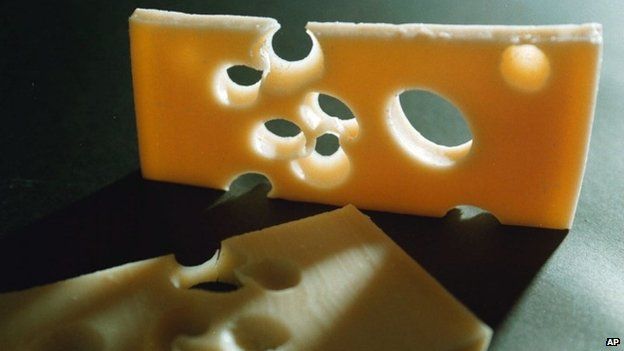Swiss cheese hole mystery solved: It's all down to dirt
- Published

Scientists say they have discovered why Swiss cheese has holes in it: apparently, it is all down to how dirty buckets are when the milk is collected.
Contrary to what cartoons have suggested over the years, the holes are not made by mice eating their way through the cheese.
And nor are they produced by carbon dioxide released by bacteria, as popular scientific belief held.
Instead, a Swiss laboratory says they are created by flecks of hay.
Agroscope, a government agricultural institute, said "microscopically small hay particles" would fall in to buckets collecting milk, and develop into bigger holes as the cheese matures.
The process affects only some Swiss cheeses, such as Emmental and Appenzell.
Agroscope said the findings explained why fewer holes had been appearing in Swiss cheeses over the last 15 years, since more modern milking methods made it less likely for hay to fall into containers.
Scientists reached their conclusions after adding small amounts of hay dust to milk and making it into cheese over 130 days.
The research has not been peer reviewed.
The theory that bacteria caused the holes has been around since 1917, after findings were published by an American scientist, William Clark.
The cheese industry calls holes in cheese "eyes". Any cheese without eyes is known as blind.